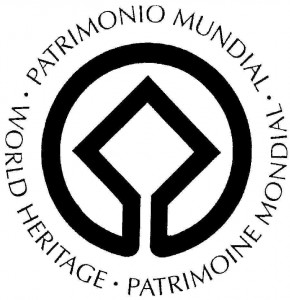The Ottoman Empire had spread from northwestern Anatolia to Mediterranean Sea and Black Sea while adopting the traditions, art and institutions of cultures in these regions and adding new dimensions to them. The Ottoman Empire took Constantinople in 1453.
Multi ethnic system
The Ottomans had a sophisticated system of internal administration and also organized the first standing army in Europe. Its inhabitants espoused many religious beliefs, spanning Judaism, Christianity, and Islam. In particular, many Jews emigrated from Spain and Portugal, after the expulsion of Jews and Muslims during the 1492 Spanish Reconquista. Anatolia remained multi-ethnic until the early 20th century.
One of the successes of the social structure of the Ottoman Empire was the unity that it caused among its highly varied populations through an organization named as millets. The Millets were the major religious groups that were allowed to establish their own communities under Ottoman rule. The Millets were established by retaining their own religious laws, traditions, and language under the general protection of the sultan. Plurality was the key to the longevity of the Empire. As early as the reign of Mehmed II, extensive rights were granted to Phanariot Greeks, and Jews were invited to settle in Ottoman territory. Ultimately, the Ottoman Empire’s relatively high degree of tolerance for ethnic differences were one of its greatest strengths in integrating the new regions but this non-assimilative policy became a weakness after the rise of nationalism.
State organization
The state organisation of the Ottoman Empire was a very simple system that had two main dimensions: the military administration and the civil administration. The civil system was based on local administrative units based on the region’s characteristics. Certain pre-Islamic Turkish traditions that had survived the adoption of administrative and legal practices from Islamic Iran remained important in Ottoman administrative circles.
The sultan’s political and executive authority was delegated. The politics of the state had a number of advisors and ministers gathered around a council known as Divan (after the 17th century it was renamed the “Porte”).
Multicultural..
The Ottoman Empire had spread on the territories around the Mediterranean Sea and Black Sea while adopting the traditions, art and institutions of cultures in these regions and adding new dimensions to them. The multicultural perspective of “millets” was reflected in the Ottoman State’s multi-cultural and multi-religious policies. Intercultural marriages also played their part in creating the characteristic Ottoman elite culture.
Architecture
“Ottoman architecture” was influenced by Persian, Byzantine Greek and pre-Islamic Sassanid architectures. During the Rise period the early or first Ottoman architecture period, the Ottoman art was in search of new ideas..
During the Tulip Era, it was under the influence of the highly ornamented styles of Western Europe; Baroque, Rococo, Empire and other styles intermingled. Concepts of Ottoman architecture mainly circle the mosque. The mosque was integral to society, city planning and communal life. Besides the mosque, it is also possible to find good examples of Ottoman architecture in soup kitchens, theological schools, hospitals, Turkish baths and tombs.
Safranbolu was inscribed as a UNESCO World Heritage Site in 1994 due to its well-preserved Ottoman residential architecture.
Examples of Ottoman architecture of the classical period, besides Constantinople and Edirne, can also be seen in Egypt, Eritrea, Tunisia, Algiers, the Balkans and Hungary, where mosques, bridges, fountains and schools were built. The art of Ottoman decoration developed with a multitude of influences due to the wide ethnic range of the Ottoman Empire. The greatest of the court artisans enriched the Ottoman Empire with many pluralistic artistic influences: such as mixing traditional Byzantine art with elements of Chinese art.
The grand tradition of Ottoman architecture, established in the 16th century, was derived from two main sources. One was the rather complex development of new architectural forms that occurred all over Anatolia, especially at Manisa, Iznik, Bursa, and Selçuk in the 14th and early 15th centuries. In addition to the usual mosques, mausoleums, and madrasahs, a number of buildings called tekkes were constructed to house dervishes (members of mystical fraternities) and other holy men who lived communally. The tekke (or zeviye) was often joined to a mosque or mausoleum. The entire complex was then called a külliye. All these buildings continued to develop the domed, central-plan structure, constructed by the Seljuqs in Anatolia.
The other source of Ottoman architecture is the Byzantine tradition. Especially as embodied in Hagia Sophia, became a major source of inspiration. Byzantine influence appears in such features as stone and brick used together or in the use of pendentive dome construction. Also artistically influential were the contacts that the early Ottomans had with Italy. Thus, in several mosques at Bursa, there are stylistic parallels in the designs of the exterior facade and of windows, gates, and roofs to features found in Italian architecture. A distinctive feature of Ottoman architecture is that it drew from both Islamic and European artistic traditions and was, therefore, a part of both.
While mosques and kulliyes are the most characteristic m
onuments of Ottoman architecture, important secular buildings were also built: baths, caravansaries, and especially the huge palace complex of Topkapi Saray at Istanbul, in which 300 years of royal architecture are preserved in its elaborate pavilions, halls, and fountains..
>> Read more about Turkish-Islamic Art
__________________________________________________________
** City of Safranbolu
Date of Inscription to the World Heritage List: 17.12.1994
List Reference: 614 Criteria: Cultural
** Historical Sites of İstanbul
Date of Inscription to the World Heritage List: 6.12.1985
List Reference: 356 Criteria: Culturalhttp://www.worldheritagesite.org/sites/istanbul.html
** Bursa and Cumalikizik: The Birth of Ottoman Empire
Date of Inscription: 22.06. 2014
KEY SITES: Istanbul-Bursa-Iznik- Edirne- Safranbolu
IMPORTANT MUSEUMS: The Turkish-Islamic Art Museum-Topkapi Museum/Beylerbeyi Palace/ Rustem Pasa Mosque… Istanbul

